 |
Turiang
|
|
|
Last modified:
6 Mar 2001 |
|
Sukhothai ceramics
on Turiang
The Turiang carried large quantities of plates with fish and floral
decorations in underglaze iron oxide. Plates of this shape and design seem
to have been in production for three centuries, but the Turiang's are generally
smaller and deeper than later examples, typically 21-24cm in diameter and 6.5-8cm
high. Other documented examples, and those recovered from the Longquan
and other shipwrecks investigated by Sten Sjostrand, are of 24-29cm diameter.
The decoration of the fish plates comprises a single fish at the interior bottom,
encircled with two rings, with the tail often extending outside the border.
Other rings decorate the rim, and the exterior walls. The ends of the rings
almost never meet perfectly. The rim is usually slightly flattened, but can
also be everted (curved convex exterior for the rim), with just a hint of a
raised lip. Variations include an encircled band of chevrons for the rim. Occasionally
the fish is accompanied by foliage, presumably seaweed. The fish vary considerably
in design. Some face to the left and some to the right, whereas on plates so
far recovered from the Longquan the fish nearly always face left.
The floral plates are similar, but in place of the fish have a single blossom
with three or four stems. The flowers are probably intended to be chrysanthemum.
The designs are very similar to those on the Vietnamese
ceramics recovered.
Some deeper bowls were found, of similar design but 8.5-9.5cm high, and
23-24.5cm in diameter. These bowls have a chevron scroll around the rim. Of the
nine bowls recovered, one features a stylized chrysanthemum, and eight depict
fish. The interiors of plates and bowls mostly have spur-disc marks; only 2% are
scarred by a tubular support.
Other Sukhothai wares, also painted with iron oxide, include bottles
of various shapes and sizes. The largest type, with ring handles, has notably
thin walls. Decorations on these bottles are mostly running calligraphic scrolls.
Like the flowers, the scrolls are similar to those on the Vietnamese ware. All
oxide paintings are applied over a cream-coloured slip, which is often smeared
near the foot-ring.

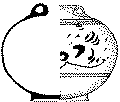 The
clay is a gritty grey, which sometimes fires to red-brown, speckled with notable
whitish impurities (quartz). The glaze is clear, or sometimes greenish - and
riddled with pin holes, in a manner peculiar to Sukhothai. No smaller Sukhothai
bowls have been seen in the cargo, while smaller Vietnamese equivalents are
present in limited number. This is the reverse of the underglaze ceramic mix
on the Longquan shipwreck, which had many Sukhothai bowls and none from
Vietnam.
The
clay is a gritty grey, which sometimes fires to red-brown, speckled with notable
whitish impurities (quartz). The glaze is clear, or sometimes greenish - and
riddled with pin holes, in a manner peculiar to Sukhothai. No smaller Sukhothai
bowls have been seen in the cargo, while smaller Vietnamese equivalents are
present in limited number. This is the reverse of the underglaze ceramic mix
on the Longquan shipwreck, which had many Sukhothai bowls and none from
Vietnam.
Sukhothai
floral designs from Turiang
 |
 |
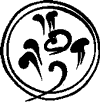 |
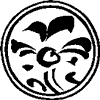 |
 |
 |
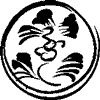 |
 |
 |
 |








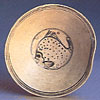

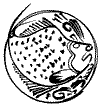




 The
clay is a gritty grey, which sometimes fires to red-brown, speckled with notable
whitish impurities (quartz). The glaze is clear, or sometimes greenish - and
riddled with pin holes, in a manner peculiar to Sukhothai. No smaller Sukhothai
bowls have been seen in the cargo, while smaller Vietnamese equivalents are
present in limited number. This is the reverse of the underglaze ceramic mix
on the Longquan shipwreck, which had many Sukhothai bowls and none from
Vietnam.
The
clay is a gritty grey, which sometimes fires to red-brown, speckled with notable
whitish impurities (quartz). The glaze is clear, or sometimes greenish - and
riddled with pin holes, in a manner peculiar to Sukhothai. No smaller Sukhothai
bowls have been seen in the cargo, while smaller Vietnamese equivalents are
present in limited number. This is the reverse of the underglaze ceramic mix
on the Longquan shipwreck, which had many Sukhothai bowls and none from
Vietnam.








